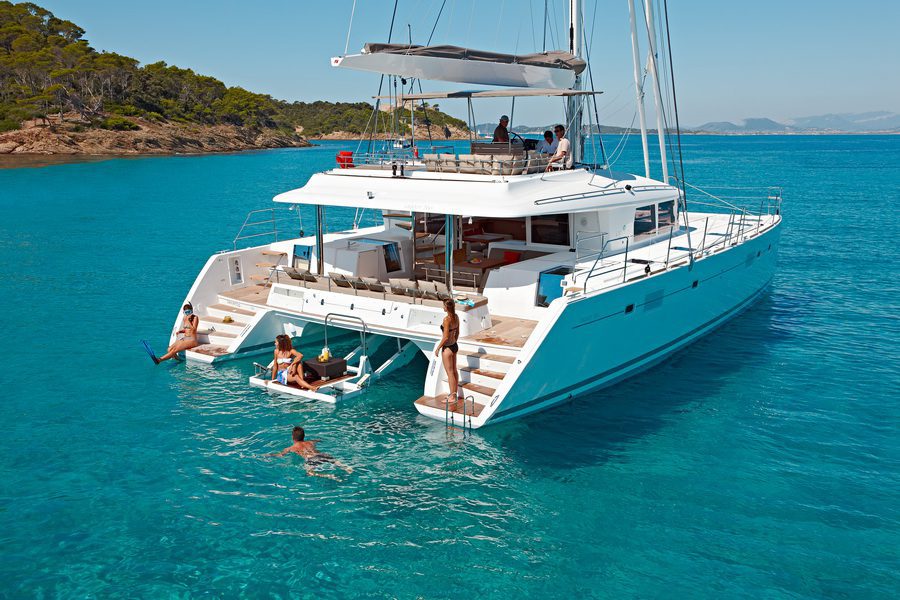


If you are on a Thailand yacht charter, then quite often you will need to be anchoring your catamaran in one of many stunning bays and coves in this beautiful sailing area. Therefore this week we are going to look at top tips for anchoring your catamaran, in order for you to be able to relax and enjoy the snorkelling and swimming around you, rather than worrying whether your sailboat is going to creep away from you! Follow our guide and you can rest assured that you are anchored securely – even if you are a seasoned sailor, it is always helpful to remind yourself of the correct procedure as good anchoring technique is essential for safety.
Pick your spot!
Choose your anchorage spot carefully, pay attention to your onboard charts, as well as the current conditions, such as the wind direction, which way the tide is going and whether there are any currents around. Ideally you will have chosen a spot that offers good protection from the wind and has a good holding ground such as sand and mud on the seabed. A top tip is that if you can see a crowded anchorage and a big open space in the middle – wonder why no one is there? Probably because the holding ground is no good, so stay away too!
Be prepared and get ready
Get the anchor ready and get yourself into position, it’s always a good idea too to make sure that the anchor line is free to run. When you choose the spot to anchor, make sure you have enough swinging room around your boat and that you are clear of any channels and any collision hazards such as rocks sticking up that you could hit if your catamaran was to swing a full circle on it’s anchor.
Slowly, slowly!
Approach slowly preferable under motor, with your sails furled and pointing into the wind.
Once you near the spot you want to drop anchor in, then slow down allowing your catamaran to coast to a stop. Always keep your eye on the depthfinder too as some of the bays can be shallow very quickly. Once the command has been given by the skipper to lower the anchor then do so gradually until you feel the pull of the anchor line once the anchor has hit the seabed below. Where possible always try and anchor in sand, know where you want your boat to sit and where you need to put your anchor down in order for your boat to sit where you want it to! Top Tip – that is not the same spot!
Make sure you are completely set.
You need to set the anchor, which means it should be dug into the seabed, so that as your boat reverses you can gradually pay out the anchor line which should keep a light tension.
General rule of thumb, is that you should have about 3 times the amount of line out as the water depth is.
Cleat off the anchor line which should feel very tight if the anchor has set correctly.
Don’t be afraid to pull up the anchor and start again if you can feel the anchor has not set correctly as it’s pulling along the seabed. It’s always better to be extra cautious rather than worry all night that you aren’t properly secured. Remember that what makes an anchor hold is to get your anchor rode to near horizontal. No anchor, no matter how great, will hold anything on a vertical rode.
Once you are sure that the anchor has set properly, then you can pay out more anchor line until you have about 7 or 8 times the anchor line to water depth.
It’s also worth checking the anchor a few times, as any change in weather or sea conditions can cause the anchor to drag. Then jump overboard, enjoy your swimming and snorkelling and the stunning scenery surrounding you on your Thailand yacht charter.
28th September 2023
16th May 2023
17th April 2023